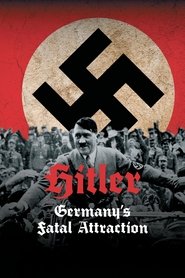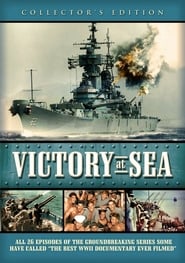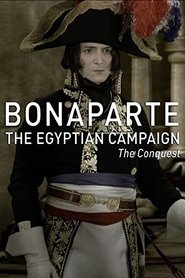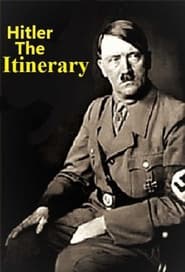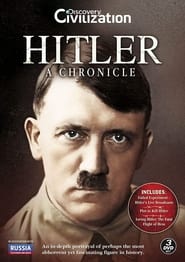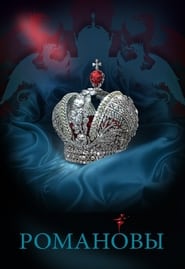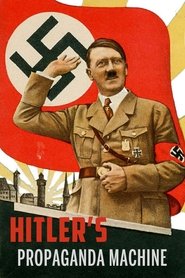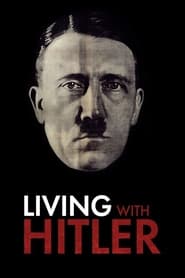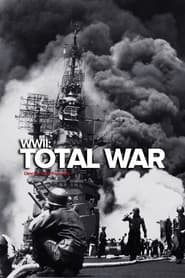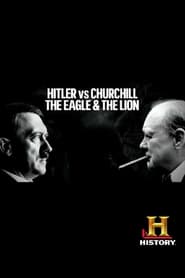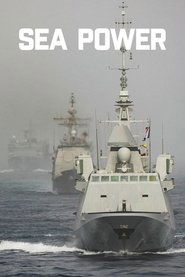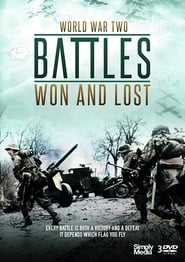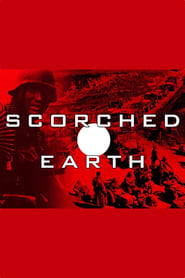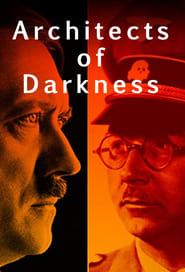Popular War Politics TV Shows on The Roku Channel - Page 4
-
Hitler: Germany's Fatal Attraction
2015
star 7.5As April 2015 marks the 70th anniversary of the death of Adolf Hitler, this documentary investigates the before, during and final days of the most terrifying dictator of the western world. -
Victory at Sea
1952
Victory at Sea
1952
star 6.5Victory at Sea is a documentary television series about naval warfare during World War II that was originally broadcast by NBC in the USA in 1952–1953. It was condensed into a film in 1954. Excerpts from the music soundtrack, by Richard Rodgers and Robert Russell Bennett, were re-recorded and sold as record albums. The original TV broadcasts comprised 26 half-hour segments—Sunday afternoons at 3pm in most markets—starting October 26, 1952 and ending May 3, 1953. The series, which won an Emmy award in 1954 as "best public affairs program", played an important part in establishing historic "compilation" documentaries as a viable television genre. Over 13,000 hours of footage gathered from US, British, German and Japanese navies during World War II were perused in the making of these compelling episodes. -
Bonaparte: The Egyptian Campaign
2017
star 7.2In the spring of 1798, Napoleon set out with 38,000 men and 10,000 sailors to conquer Egypt. -
Korea: The Unfinished War
2003
It was the first war the UN would fight in, the opening salvos of the Cold War. A war that would redefine global politics & shape a Region. This is the Story of the Korean War. Through gripping reenactments & the words of those who fought & lived through it, this four part series will take you through the horrors of the war. -
1916 Seachtar na Cásca
2010
star 3.7Documentary on the 7 signatories of the 1916 Easter Proclamation. -
ADOLF HITLER: THE ITINERARY
2019
star 9For nearly 25 years, Harald Sandner, a history enthusiast, has accurately traced the Führer's itinerary from one place to another, from his childhood to the end of his life. Where was he ? Where was he sleeping? Where did he lead the war? How was he moving? Which places have witnessed the biggest decisions? Harald Sandner left nothing to chance. We will film his unique and exclusive discoveries. A collection that enters for the first time into the details of the daily life and life of the most bloodthirsty dictator of the twentieth century with the aim of decrypting the premises of the Nazi ideology. -
The Hitler Chronicles
2018
star 8.5The person Adolf Hitler shaped the 20th century like no other. This series documents the Hitler's life using unpublished material. -
The Great War
2007
The Great War
2007
The Great War is a CBC television film documenting Canadian participation in the First World War. The film stars Justin Trudeau and was shown on Canadian television during the 90th Anniversary of the Vimy Ridge battle, airing in two parts on April 8 and April 9, 2007. The Fox website included the following notice seeking people to participate in the making of the film: Did your great-grandfather take Vimy Ridge? Did he play a part in the three-month battle at Passchendaele? Did he break through the German line at Amiens? For a landmark film to mark the 90th anniversary of the First World War, the CBC is recruiting 300 descendants of those who went to war between 1914 and 1918. The descendants will walk in the footsteps of their ancestors and take part in massive battle recreations. -
The Romanovs
2013
The Romanovs
2013
star 6.8An elegantly produced documentary divided into eight parts and running nearly seven hours in length, The Romanovs beautifully encapsulates the epic story of the Russian Dynasty over the course of over three hundred years. -
Hitler's Propaganda Machine
2017
star 8Power, terror, performance. These notions define our perception of Adolf Hitler and the Nazi Party at the height of the Third Reich. But behind these impressions Hitler was a rather ordinary man. This compelling new series tells the story of one of the most comprehensive, wide-reaching, and successful marketing campaigns in modern history. It describes in a whole new way the rise of Adolf Hitler. -
Living with Hitler
2021
Living with Hitler
2021
star 8.8The Nazi era from 1993 to 1945 is illustrated through archived material, with insights and anecdotes provided by world-leading experts and commentators. -
World War II: Total War
2018
star 6.5A Total War is all encompassing, a war without boundary or limitation. It is a war of material and morale. A war that mobilizes, destroys and displaces civilian populations. The Second World War was a war in which massive armies advanced, confronting whole populations with impossible choices. The manufacture of weapons transformed industry and the workforce; area bombing campaigns reduced cities to rubble; sieges doomed populations to starvation; racial policies sponsored campaigns of genocide. Told through archive footage and expert interviews, we learn how WWII shattered the boundaries between home-front and battlefield. -
Hitler vs Churchill: The Eagle and the Lion
2016
A documentary which explores the remarkable parallels between the careers of Adolf Hitler and Winston Churchill, as well as their personal rivalry and animosity. -
Sea Power
2020
Sea Power
2020
star 5.8This documentary series delves into the battleships, submarines and aircraft carriers that have changed the history of modern warfare. -
World War II: Battles Won and Lost
2017
This sweeping World War II series examines the outcome of battles fought in every major theater. It shows that these battles were decided by strategy and by which armies could capitalize on the terrain or gain better access to supplies. Whether waged by the Allies or by Hitler and the Axis powers, victory or defeat could determine possession of territory, resources, or the will to go on fighting. -
Jungle War
2019
Jungle War
2019
Jungle Warfare in the 20th century, from WW2, to Malaya and Indonesia, to Vietnam and Cuba. -
Scorched Earth WWII
2016
Scorched Earth WWII
2016
When the Nazis unleashed the 'Blitzkrieg', it was a kind of warfare the world had never witnessed before and immediately upended all traditional ideas of military strategy and tactics. Suddenly Europe and North Africa was reeling from this new type of combat and had to adapt quickly or suffer the consequences of Hitler's evil aims. Now, using ground-breaking graphics and state-of-the-art computer animation, as well as archival footage culled from Allied and Axis sources, the incredible initial successes of Hitler's seemingly unstoppable war machine are revealed and examined. Includes 'Hitler's Big Guns', 'Africa Korps', 'Infantry Firepower' and more! -
Battlezone WWII: The U.S. Army Air Forces
2015
This Battlezone series features an in-depth analysis of the evolution of the U.S. Army Air Forces and its role in combat. -
The Sound and the Fury
2025
star 6From the Japanese invasion of Manchuria to the siege of Stalingrad, and from the attack on Pearl Harbor to the battle of El Alamein, the events of the Second World War are presented on a 'planet level' to place it on a truly global scale -
Architects of Darkness
2017
Six one hour episodes each focusing on a key individual that traces the trajectory and design of Hitler’s thousand year Reich. From the beer halls of Munich to the horrors of the Final Solution, these individuals were truly Architects Of Darkness of the Nazi Third Reich.
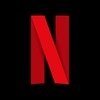 Netflix
Netflix
 Amazon Prime Video
Amazon Prime Video
 Apple iTunes
Apple iTunes
 Apple TV Plus
Apple TV Plus
 Disney Plus
Disney Plus
 Google Play Movies
Google Play Movies
 Paramount Plus
Paramount Plus
 Hulu
Hulu
 HBO Max
HBO Max
 YouTube
YouTube
 fuboTV
fuboTV
 Peacock
Peacock
 Peacock Premium
Peacock Premium
 Amazon Video
Amazon Video
 The Roku Channel
The Roku Channel
 AMC+
AMC+
 Kocowa
Kocowa
 Hoopla
Hoopla
 The CW
The CW
 Vudu
Vudu
 Starz
Starz
 Showtime
Showtime
 PBS
PBS
 Pantaflix
Pantaflix
 FXNow
FXNow
 Tubi TV
Tubi TV
 Kanopy
Kanopy
 Comedy Central
Comedy Central
 Crunchyroll
Crunchyroll
 Microsoft Store
Microsoft Store
 Redbox
Redbox
 Sun Nxt
Sun Nxt
 ABC
ABC
 DIRECTV
DIRECTV
 Crackle
Crackle
 Fandor
Fandor
 Plex
Plex
